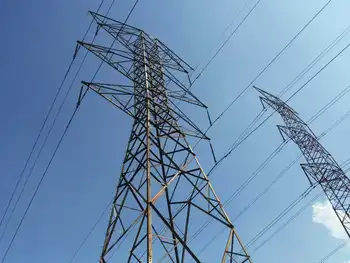Alternate energy costs pressure power rates
By The Oregonian
Arc Flash Training CSA Z462 - Electrical Safety Essentials
Our customized live online or in‑person group training can be delivered to your staff at your location.

- Live Online
- 6 hours Instructor-led
- Group Training Available
Oregon's biggest electric companies, PacifiCorp and Portland General Electric, filed for rate increases recently with state utility regulators.
Both cited renewable energy projects as the reason. If approved by the Oregon Public Utility Commission, the raises would take effect in early 2010, The Oregonian said.
PacifiCorp wants a $92.1 million increase, or 9.1 percent, which would add an average of $5.12 to a residential customers monthly bill, which is at about $82.85 for 950 kilowatt-hours per month.
PGE's investment in renewable energy at Biglow Canyon translates to a request for a 2.3 percent increase for retail customers, totaling $41.3 million.
But PGE's prices may decrease slightly because prices for power are falling, resulting in an offsetting filing for a $46.8 million decrease, PGE said.
Steve Corson of PGE said the impact of the two filings on the average, 900-kilowatt-hour customer would be a few cents a month, to the customer's advantage.
Some groups say rate hikes resulting from the shift to alternative energy sources will become common as utility companies build wind farms and solar systems to meet state guidelines.
Costs associated with renewables, primarily wind, are high, said Michael Early, executive director of Industrial Customers of Northwest Utilities, tagged with some of the steepest hikes.
"We have a renewable energy portfolio, but it doesn't come without a cost."
Under PacifiCorp's request, industrial customers would get some of the biggest rate jumps at 13.7 percent.
The rate case is the first for PacifiCorp since 2006, when the electric utility requested an increase of 13.2 percent and got about 5 percent.
Since 2006, Oregon's portion of the company's investments in electric plants and other capital projects has grown by $500 million, said Bill Griffith, director of pricing.
PacifiCorp has invested in two natural gas generating plants in Washington and Utah and three new wind facilities in Wyoming.
Griffith said industrial customers are being asked to pay more because they have the most need for more electricity.
"Their lights are always on," Griffith said. "Most of the cost is generation and transmission, and that's a larger proportion of the industrial customers' bill."
But to Early, who represents 38 manufacturers, the extra burden doesn't match the flat growth of the industrial sector.
"The industrial load is not growing," Early said. "If there's growth, it's coming from other sectors. It's a bad time for any rate increase. The long-term implication for the economy and the manufacturing sector is difficult."
In addition, PacifiCorp wants an increase in its authorized profit margins from 10 percent to 11 percent.
Bob Jenks, executive director of the Citizens' Utility Board, said it was unlikely the state utility commission would approve the profit increase.
"We think it's an outrage considering the state of the economy," Jenks said.
Portland General Electric raised rates by 5.6 percent starting this year. The average monthly bill for a PGE customer using 900 kilowatt-hours of electricity grew from $88.21 to $93.59.











